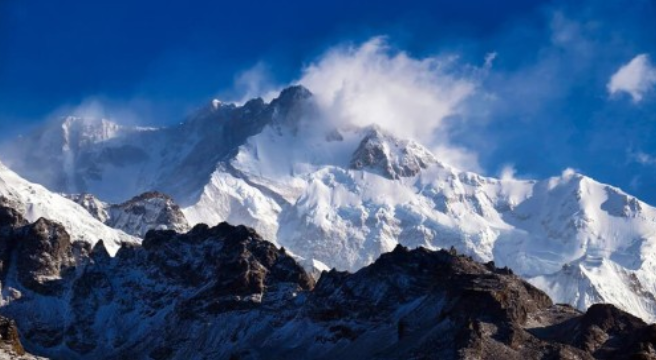The eastern Himalayas harbor some of the world’s most pristine and challenging trekking destinations, where towering peaks pierce the clouds and ancient cultures thrive in remote valleys. Among these magnificent adventures, the Kanchenjunga Trekking routes and Makalu Base Camp Trek stand as testament to nature’s raw power and beauty, offering intrepid explorers experiences that remain largely untouched by mass tourism.
Kanchenjunga Trekking: Journey to the Third Highest Peak
Kanchenjunga, the world’s third-highest mountain at 8,586 meters, dominates the border between Nepal and Sikkim. The name translates to “Five Treasures of Snows,” referring to its five distinct peaks that form a magnificent massif visible from incredible distances. Kanchenjunga trekking represents one of Nepal’s most remote and spectacular adventures, taking adventurers through diverse ecosystems, from subtropical forests to alpine meadows and glacial moraines.
The region remained restricted to outsiders until 1988, preserving its pristine environment and authentic cultural heritage. This isolation has created a trekking experience that feels genuinely exploratory, where each day brings discoveries of untouched landscapes and encounters with wildlife rarely seen elsewhere in the Himalayas.
Kanchenjunga Base Camp Trek: The North and South Circuit
The Kanchenjunga Base Camp Trek offers two distinct routes: the North Base Camp and South Base Camp circuits, each providing unique perspectives of this magnificent peak. The North Base Camp trek leads to Pangpema at 5,143 meters, offering stunning views of the north face of Kanchenjunga and surrounding peaks including Tent Peak and The Twins. This route traverses the Ghunsa Valley, passing through rhododendron forests, traditional Tibetan Buddhist villages, and high-altitude yak pastures.
The South Base Camp route reaches Oktang at 4,730 meters, providing spectacular views of the south face and the five peaks of Kanchenjunga. This path winds through the Yalung Valley, where trekkers encounter diverse flora and fauna, including the elusive snow leopard, red panda, and various species of pheasants and eagles.
Most adventurous trekkers combine both circuits in a challenging 24-28 day journey that circumnavigates the entire Kanchenjunga massif. This comprehensive trek crosses high passes, visits sacred lakes, and provides unparalleled mountain panoramas while maintaining the authentic wilderness experience that has become increasingly rare in popular trekking regions.
The villages along the Kanchenjunga Base Camp Trek route showcase the rich cultural tapestry of the region. Ghunsa, the largest settlement in the area, serves as a crucial acclimatization stop where trekkers can observe traditional Tibetan Buddhist practices, visit ancient monasteries, and interact with locals whose lifestyles have remained largely unchanged for centuries.
Makalu Base Camp Trek: Adventure to the Fifth Highest Peak
The Makalu Base Camp Trek ventures into the heart of the Makalu-Barun National Park, leading to the base of Makalu, the world’s fifth-highest peak at 8,485 meters. This trek stands among Nepal’s most challenging and rewarding adventures, combining technical difficulty with extraordinary natural beauty and cultural immersion.
Makalu’s pyramid-shaped summit, often called the “Great Black One,” presents a formidable and majestic sight that has captivated mountaineers and trekkers for decades. The mountain’s isolation in the far eastern region of Nepal has preserved its surroundings as one of the country’s last pristine wilderness areas.
The Makalu Base Camp Journey
The Makalu Base Camp Trek typically begins with a flight to Tumlingtar, followed by several days of hiking through terraced hillsides and traditional villages before entering the national park. The trek passes through diverse ecological zones, from tropical forests at lower elevations to alpine tundra and glacial terrain near base camp at 4,870 meters.
One of the trek’s most challenging aspects involves crossing several high passes, including the formidable Shipton La at 4,216 meters and the technical sections that require basic mountaineering skills. These challenges reward trekkers with exclusive access to some of the Himalayas’ most spectacular scenery, including close-up views of Makalu, Everest, Lhotse, and Chamlang.
The Barun Valley, through which the trek passes, harbors incredible biodiversity with over 3,000 species of flowering plants, 440 bird species, and numerous mammals including the Asiatic black bear, clouded leopard, and musk deer. This ecological richness creates a trekking experience that combines high-altitude adventure with wildlife observation opportunities rarely found elsewhere.
Cultural Encounters and Remote Villages
Both the Kanchenjunga and Makalu regions offer profound cultural experiences through interactions with indigenous communities. The Sherpa, Rai, and Limbu peoples have inhabited these valleys for generations, developing sustainable lifestyles perfectly adapted to the harsh mountain environment.
Villages like Sedua, Tashigaon, and Khongma along the Makalu route showcase traditional architecture, agricultural practices, and social customs that provide insights into Himalayan mountain culture. Similarly, settlements throughout the Kanchenjunga region, including Taplejung, Sekathum, and Ghunsa, offer authentic cultural exchanges where visitors can participate in local festivals, observe traditional crafts, and learn about Buddhist and Hindu practices that shape daily life.
Planning and Preparation
These remote treks demand thorough preparation and significant experience in high-altitude trekking. Both Kanchenjunga and Makalu expeditions require special permits, including restricted area permits for Kanchenjunga, making independent travel challenging and expensive. Most trekkers join organized expeditions with experienced guides familiar with route conditions, weather patterns, and emergency procedures.
Physical preparation should include months of cardiovascular training, strength building, and altitude acclimatization experiences. The technical nature of these treks, particularly the Makalu Base Camp Trek, requires basic mountaineering skills and familiarity with climbing equipment for river crossings and steep terrain navigation.
The best trekking seasons occur during spring (March-May) and autumn (September-November), when weather conditions provide clearer mountain views and more stable trail conditions. However, these remote regions can experience sudden weather changes, requiring flexible itineraries and emergency contingency plans.
Conclusion
The Kanchenjunga Trekking adventures and Makalu Base Camp Trek represent the pinnacle of Himalayan exploration, offering experiences that combine physical challenge, natural beauty, and cultural authenticity in ways that have become increasingly rare in our interconnected world. These journeys demand significant commitment, preparation, and respect for the mountain environment and local communities that call these remote valleys home.
For serious trekkers seeking adventures beyond the crowded routes of popular destinations, these eastern Himalayan expeditions provide transformative experiences that create lasting memories and deep appreciation for Nepal’s incredible mountain heritage. The pristine wilderness, towering peaks, and genuine cultural encounters available on these treks justify their reputation as among the world’s greatest trekking adventures, reserved for those willing to venture far from the beaten path in pursuit of authentic mountain experiences.

